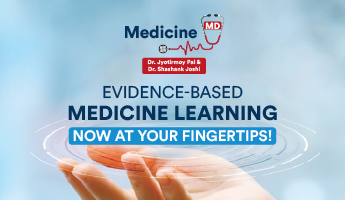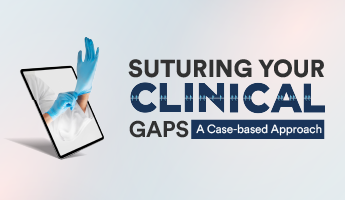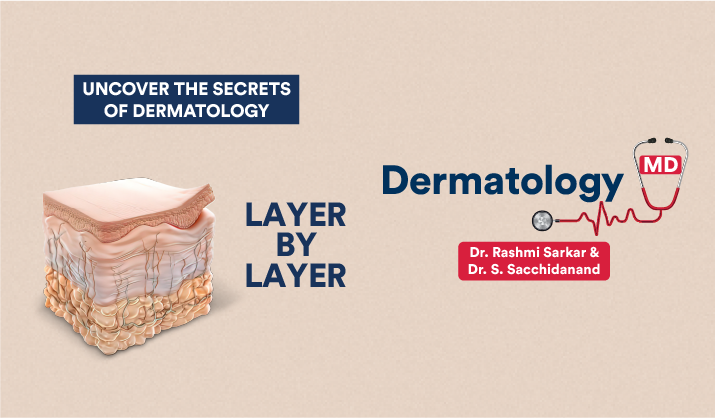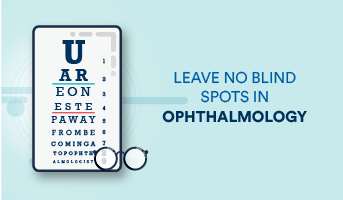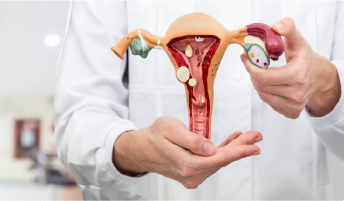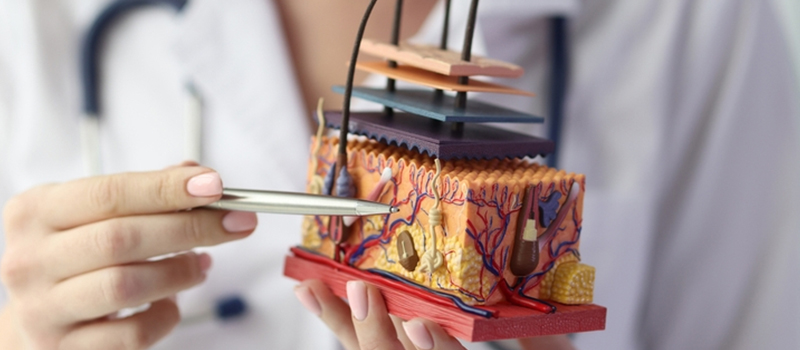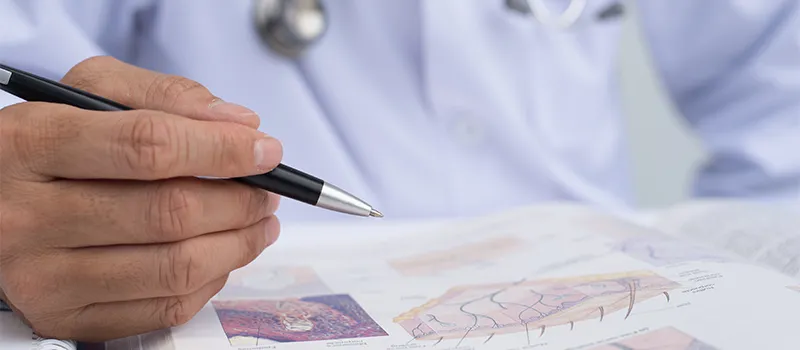

Best Dermatology Books for PG Students & Residents
Dermatology, Leprosy, and Venerology are specializations with elements of both medicine and surgery. The Dermatology MD curriculum is made up of initial medical, transitional, or surgical components.
Postgraduate students pursuing PG in Dermatology must refer to the latest edition of the standard textbooks along with reference books, and handbooks to learn and understand the subject.
Here’s a list of the best books on Dermatology for PG students and residents.
1. IADVL Textbook of Dermatology by Shital Poojary
- It is one of the best-selling dermatology books for PG students, residents, and practitioners.
- The book has three volumes.
- A handy reference for all the most recent developments in leprology, venereology, and dermatology.
- Updates on any discoveries and developments in dermatological technology are quite helpful.
- The content of the book is concise and structured well including the essential practice ideas.
2. Postgraduate Dermatology by Koushik Lahiri and Abhishek De
- It is a must-have book for postgraduate dermatology students.
- The book has more than 180 chapters and 15 sections that include chapters on clinical dermatology, sexually transmitted diseases, leprosy, procedural dermatology, and dermatologic-therapeutics.
- The book is presented in clear English with concise information, algorithms, tables, diagrams, and photographs.
- With a focus on frequently asked questions in postgraduate examinations, special attention has been given to assisting postgraduate students who are taking exams.
- After each chapter, the key topics are summarised for easy recall.
3. IADVL’s Concise Textbook of Dermatology by Lalit Kumar Gupta
- It immensely benefits UG and PG dermatology students, internists, and practitioners.
- The book is written in a lucid manner and concise format.
- New chapters have been introduced such as dermatoses affecting mucosa, dermatological emergencies, and diseases affecting the vascular system.
- The latest edition of the book is updated with the recent advances and the evidence-based treatment approach along with clinical pictures.
- The text includes flowcharts, figures, illustrations, and more for better understanding and retention.
- Based on the etiopathogenetic and morphological similarities, the chapters have been reorganized for easy comprehension.
- The content is organized into distinct “learning objectives” at the beginning of each chapter, followed by introduction, etiopathogenesis, clinical characteristics, differential diagnosis, and therapy, in that sequence.
- The chapter’s main points are summarised in its “Key Learning Points” at the end. There are multiple-choice questions (MCQs) that are both text and image-based to aid students in getting ready for the postgraduate entrance exams (NEET).
4. Clinical Correlation with Diagnostic Implications in Dermatology by Biju Vasudevan
- It is the ultimate guide for clinicians, medical students, and practitioners.
- This book’s distinctive style offers cogent clinical-diagnostic insights that broaden our understanding of ourselves as a quantum force multiplier.
- It includes contemporary developments in the clinical, investigative, diagnostic, and therapeutic fields, significantly increasing the body of knowledge.
- Additionally, the structure makes learning straightforward and reader-friendly.
- It is a comprehensive guide to common dermatological disorders.
5. Rook’s Textbook of Dermatology by Jonanthan Barker, Tanya O. Bleiker, Robert Chalmers, Christopher E. M. Griffiths, and Daniel Creamer
- It is among the best-selling dermatology books.
- The latest edition is a highly comprehensive and illustrative reference book for PG students, practitioners, and residents.
- More than 5000 images have been included to aid the diagnosis and variations in disease manifestation.
- Every disorder topic is explained in a consistent templated approach.
- The book covers all the dermatological aspects including medical, surgical, and aesthetic dermatology.
- More emphasis is given to the clinical significance, clinical trials, guidelines, and latest ICD codes.
- It is broader, quicker, and has more dynamic digital search capabilities. More thorough, with more photos, diseases covered, and complete search functionality.
6. Andrews’ Diseases of the Skin by William D. James & Dirk Elston & James R. Treat & Misha A. Rosenbach
- It is a must-have book for dermatology learners.
- The textbook is concise, clinically focused, and has a user-friendly format.
- The book provides access to about 20 videos that demonstrates the procedures such as laser tattoo removal, nerve block, chemical peels, and more.
- The content is supported by more than 1300 illustrations.
- The latest edition includes the recent advances and all the updated information including the new diagnostic classifications and therapies.
- New treatment strategies for inflammatory, neoplastic, and blistering skin diseases are included in the text.
- The book makes sure you keep up with new techniques and approaches for diagnosis and treatment, fresh organisms and illnesses that have recently been identified, and current applications for both tried-and-true and more recent drugs.
7. Jopling’s Handbook of Leprosy by Kabir Sardana and Ananta Khurana
- It is among the bestselling books for Leprosy.
- The latest edition of the book has clinical images and schematic diagrams added to the text for better understanding.
- The important points in the text are underlined to gain your attention and cross citations between the chapters help to get a broader perspective.
- The following chapters are updated with new topics and updated content such as Diagnosis, Immunopathogenesis, Drug Resistance, Chemoprophylaxis, Nerve Function Assessment, Muscle Testing, and the Disability and Deformities section.
The pursuit of PG is a difficult endeavour. A PG student is required to participate in practical sessions, be posted to an OT or ward, and complete junior residency in addition to attending lectures and finishing their thesis. Due to the difficulty of juggling everything at once, students frequently find it difficult to attend lectures and practical sessions. The best online postgraduate program in dermatology can help in this situation. Enrolling in such a course will help you get through the difficult part of your postgraduate studies.
The Dermatology MD e-lecture series by Dr. Rashmi Sarkar and Dr. S. Sacchidanand is among the top PG dermatology lecture series available. All the topics have been carefully chosen, taking into consideration the postgraduate students’ most frequent questions and informational needs.
For students who want to excel in the post-graduate degree, this lecture series elements appropriately address students’ needs for confronting significant clinical issues and diseases, assisting them in understanding social and community dermatology. Dermatology e-lecture series include video lectures supported by benchmark trials, well-illustrated notes, self-assessment questions, spotters, colour-coded drug formulary, benchmark trials and regular chat shows.
Related Courses
Cosmetic Botulinum Toxin Simplified
Dr Rasya Dixit , Dr Urmila Nischal , Dr K. C Nisch...
Critical Care Simplified
Dr Yatin Mehta , Dr Subhal Dixit , Dr Kapil G. Zir...
Advance Course in Ultrasound and Infertility
Dr Sonal Panchal , Dr Chaitanya Nagori
Ganga Videos on Spine Surgery
Prof Rajasekaran Shanmuganathan , Dr Ajoy Prasad S...

